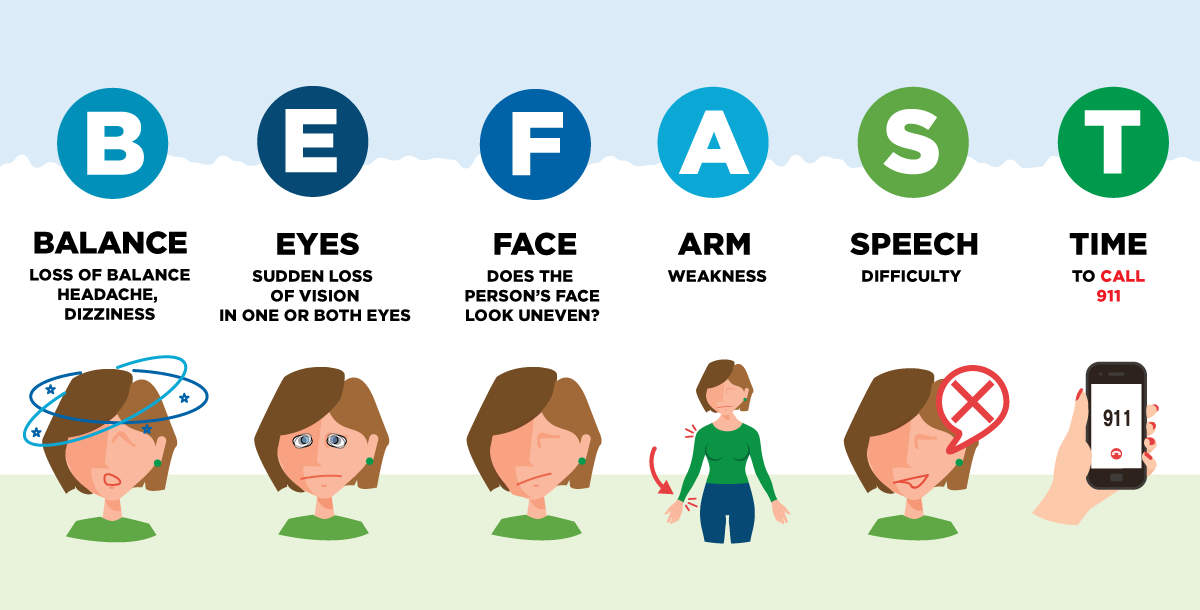3. Sudden Trouble Seeing, Walking, or Loss of Balance
Vision changes (e.g., blurred or double vision), dizziness, loss of coordination or difficulty walking can signal that the stroke is affecting balance or vision centres in the brain. The CDC mentions “sudden trouble seeing in one or both eyes” and “sudden trouble walking, dizziness, loss of balance or coordination” as key signs. CDC+1
If you or someone cannot walk steadily, has unexplained vertigo or two‑vision, this is serious.

4. Sudden Severe Headache with No Known Cause
While less common, a sudden, intense headache — described as “the worst headache of your life” — especially if it comes with vomiting, dizziness or loss of consciousness, may signal hemorrhagic stroke (bleeding in the brain). The Cleveland Clinic lists “headaches (usually sudden and severe)” among possible symptoms. Cleveland Clinic
If such a headache appears out of the blue, and especially with other symptoms, treat it as an emergency.
What “15 Minutes Before” Really Means
The notion “about 15 minutes before stroke” doesn’t mean exactly 15 minutes in every case. Some strokes follow a brief Transient Ischemic Attack (TIA, often called a “mini‑stroke”), where symptoms may last only a few minutes, then resolve. These TIAs often precede a full stroke. Wikipédia+1
Other times, warning signs may develop over hours or even days, such as increasing migraines, transient weakness or vision changes. One hospital blog notes that individuals may experience subtle symptoms up to a month before a stroke. Aayush Hospital
In all cases, any sudden or new neurological symptom warrants immediate evaluation.
What to Do If You Suspect a Stroke
-
Call emergency services immediately — do not drive yourself. Time is critical. The earlier treatment starts, the better the outcome. CDC+1
-
Use the FAST or BE FAST mnemonic:
-
Face: Does one side droop when smiling?
-
Arm: Can both arms be raised equally?
-
Speech: Is it slurred or strange?
-
Time: If any sign is present, call for help.
-
Balance and Eyes (in BE FAST): Balance problems or sudden vision changes included as well. Verywell Health
-
-
Note the time symptoms began — this helps doctors decide which treatments are available. www.stroke.org
-
While waiting for help, stay calm, ensure the person is in a safe position (usually lying down with head slightly elevated), and do not give food or drink until evaluated.
Prevention and Managing Risk
Because strokes can be devastating, prevention matters:
-
Control high blood pressure (hypertension) and high cholesterol.
-
Manage diabetes and stop smoking.
-
Exercise regularly, maintain healthy weight, eat a diet rich in fruits, vegetables, whole grains and low in processed foods. Cleveland Clinic
-
Be aware of risk factors: age, family history, atrial fibrillation, obesity, high cholesterol and high blood pressure. Aayush Hospital
-
If you experience a TIA or transient symptoms, treat them as if a major stroke is imminent. Early intervention can prevent a full stroke. Wikipédia
Final Thoughts
The image’s claim that “about 15 minutes before the stroke the body usually sends 4 clear signals” is a helpful reminder: sometimes the body does warn us — though not always exactly 15 minutes ahead. Whether you experience a sudden one‑sided weakness, confusion, vision trouble, balance issues or a severe headache, it’s essential to take it seriously.
Recognising these signals and acting fast can be life‑saving. You don’t want to doubt yourself — if you suspect a stroke, call emergency services immediately. Remember: prompt action can reduce brain damage, disability and potentially save a life.

